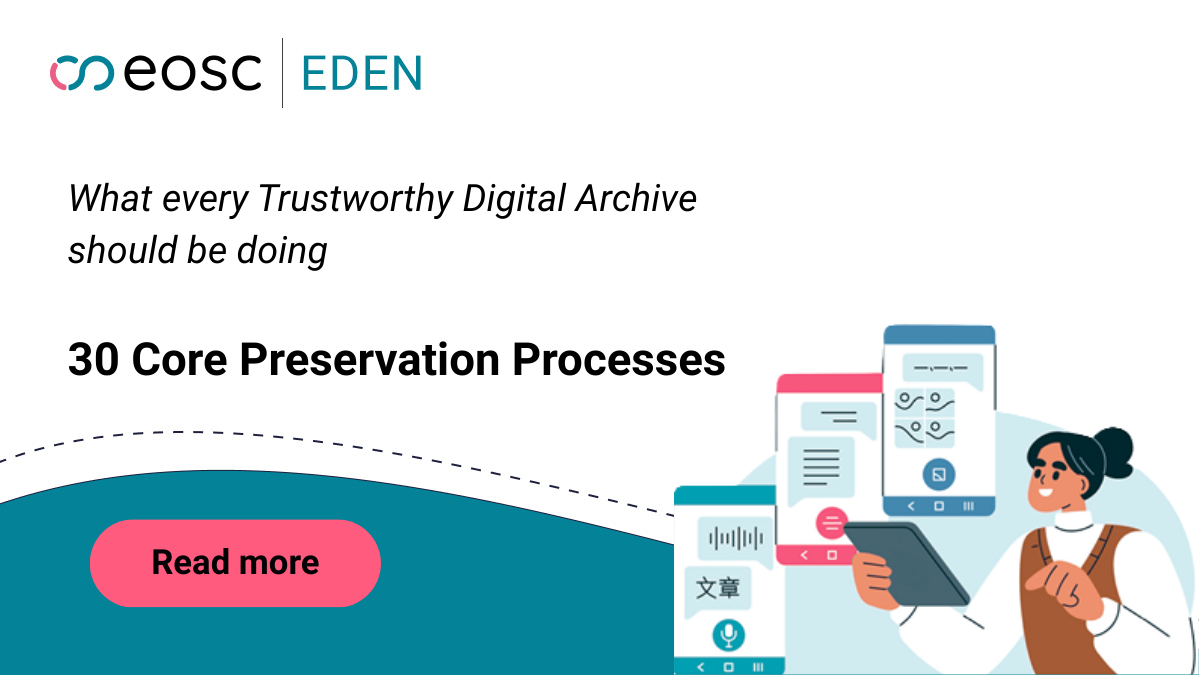
Trustworthy Digital Archives (TDAs) ensure that digital objects remain usable by their designated community over time. But how do they achieve this? Despite large reference models such as OAIS, a concise and structured description of these steps has been missing until now.
Within EOSC EDEN we have identified 30 Core Preservation Processes (CPPs) as actions which every TDA should undertake - either directly or through its associated parties or services. While certification frameworks like CoreTrustSeal are established frameworks to describe the overall organisational digital preservation processes against, CPPs focus on operational activities on the basis of the digital object and have been described as a sequence of implementable steps, either by humans or by automation.
Each CPP description includes expected inputs and outputs, a detailed description section, a step-by-step description and dependencies and relationships with other CPPs. In addition, we have linked each CPP to the certification frameworks CoreTrustSeal, nestor Seal (DIN 31644) and ISO 16363 “Audit and certification of trustworthy digital repositories”, to PREMIS and to OAIS and have collected a first set of links to reference implementations.
We are hoping to significantly extend the collection of use cases and reference implementations with the help of the international community!
The CPPs can be used:
- As training material which give insight into required digital preservation processes
- As a basis for guidelines to describe processes to be implemented
- To build workflows by chaining separate CPPs together
- As the basis for a dependency visualisation - a proof of concept for this can be found here
- As a driver for communication around what is necessary for long-term preservation
EOSC EDEN is currently establishing a mechanism for feedback on the CPPs. Watch this space for more soon!
For more information, see the EOSC EDEN M1.1 Report on Identification of Core Preservation Processes including all 30 CPP descriptions and a Glossary: https://doi.org/10.5281/zenodo.16992452